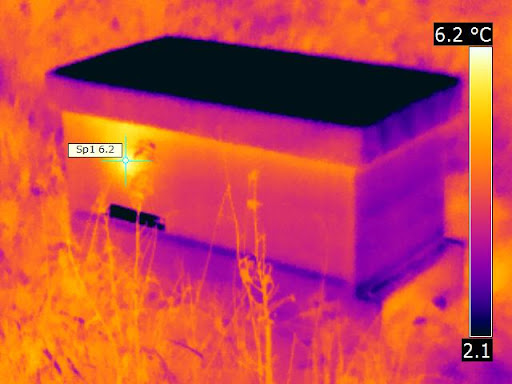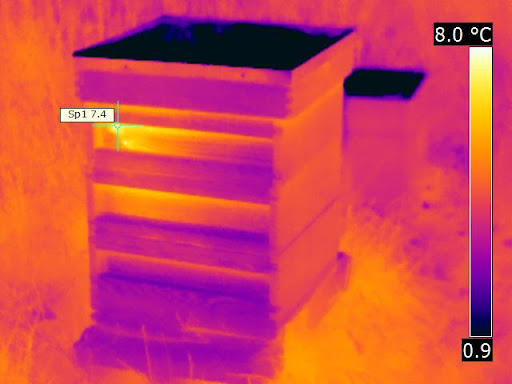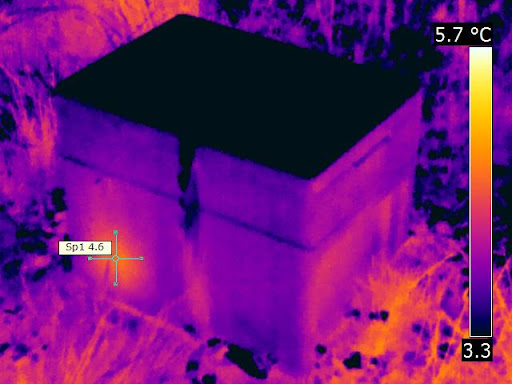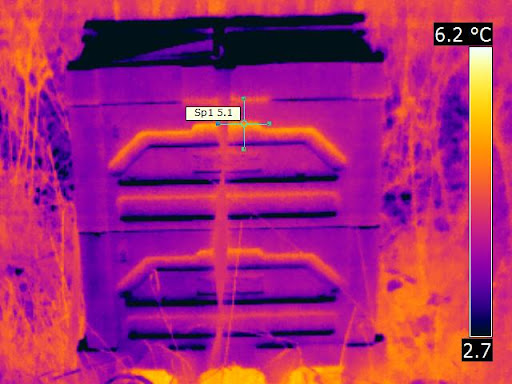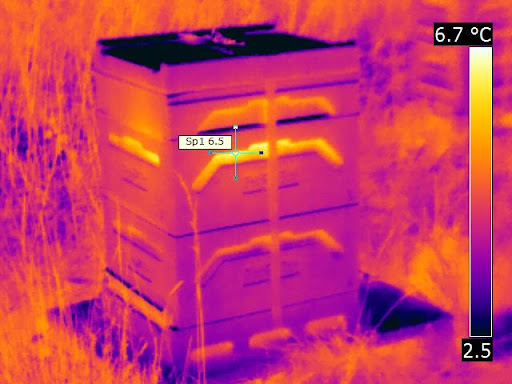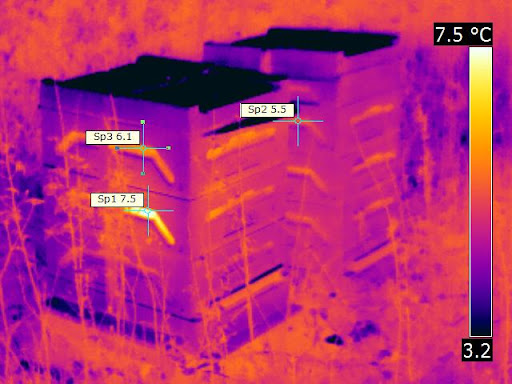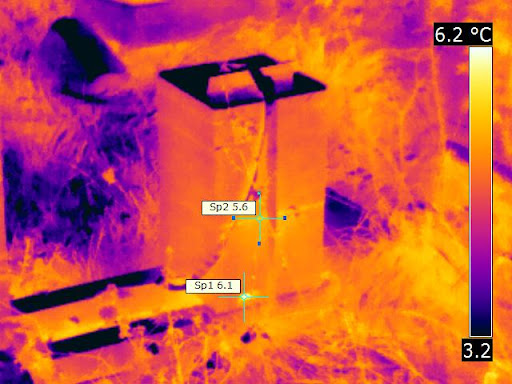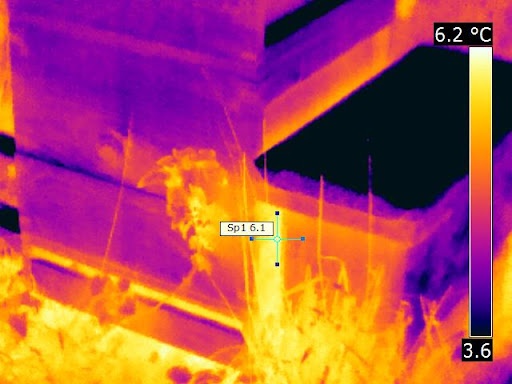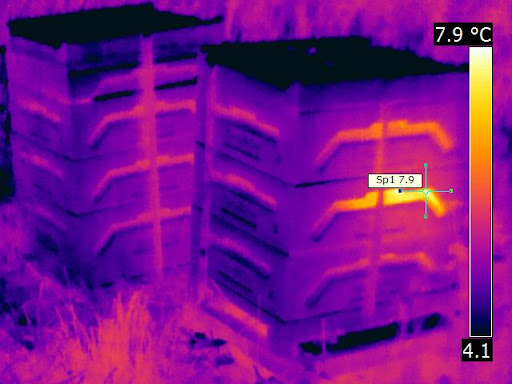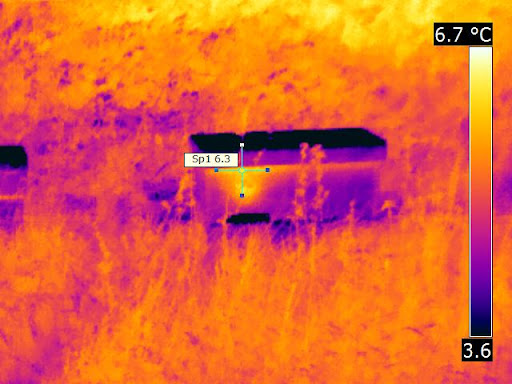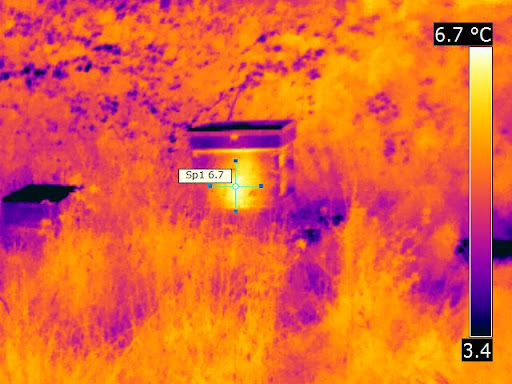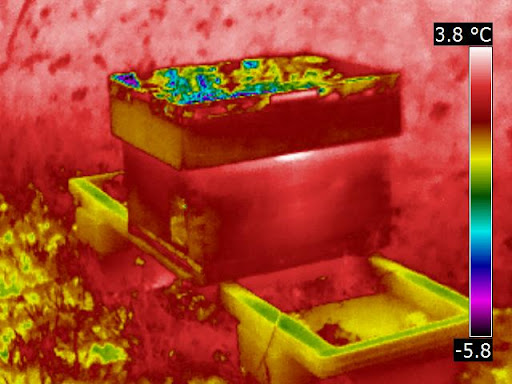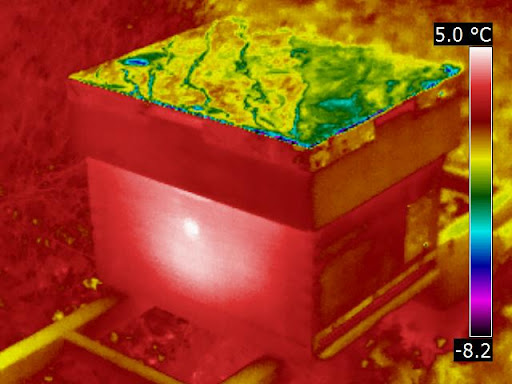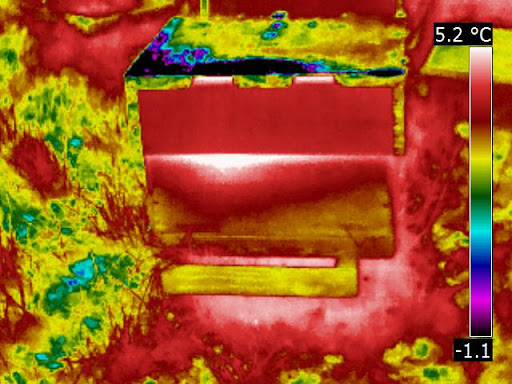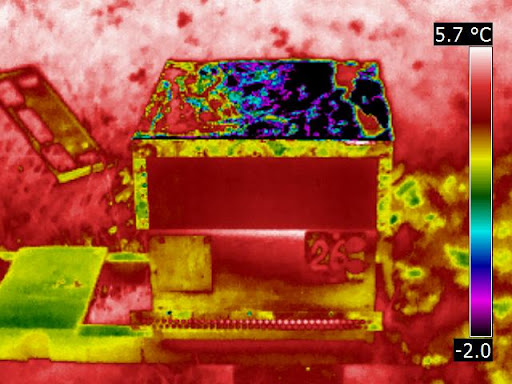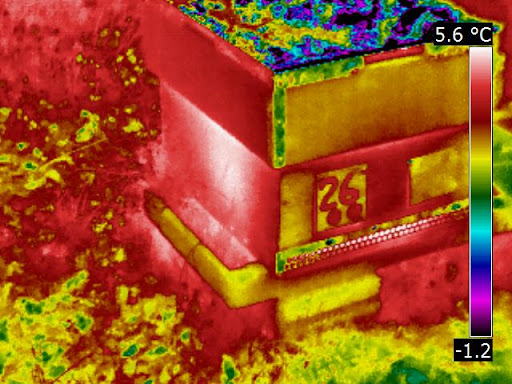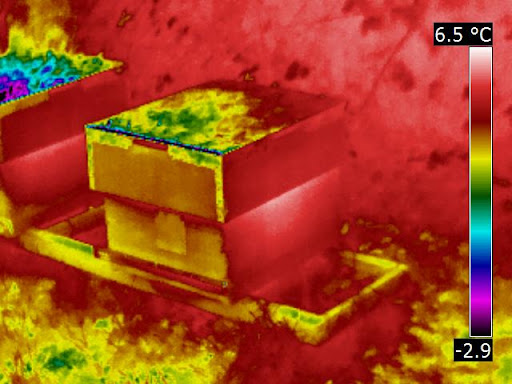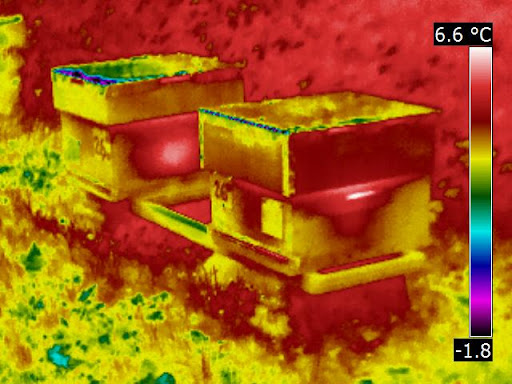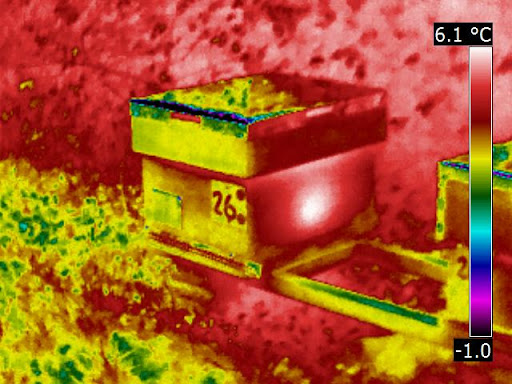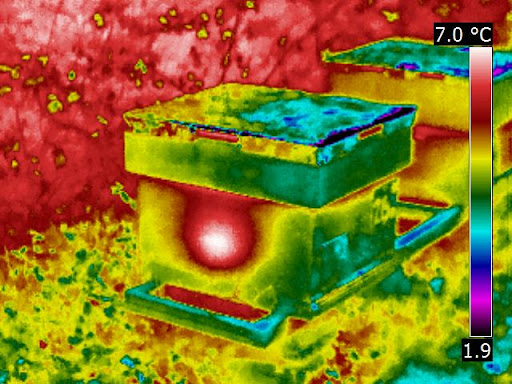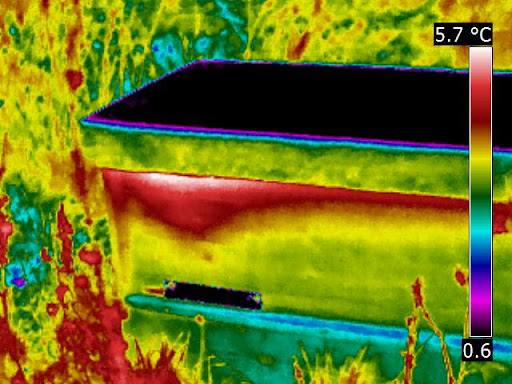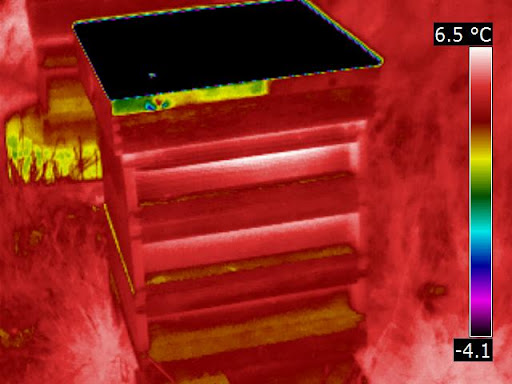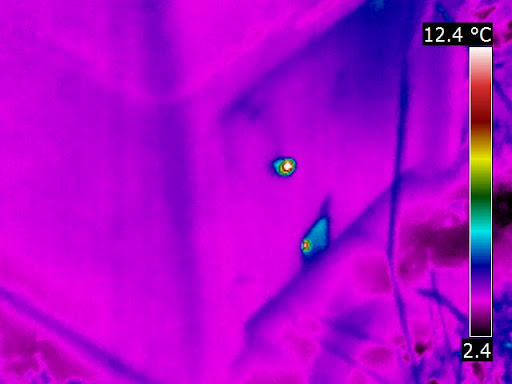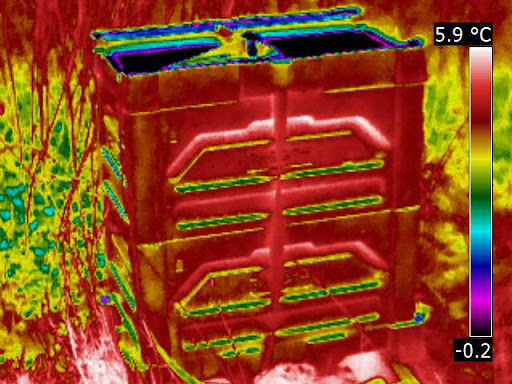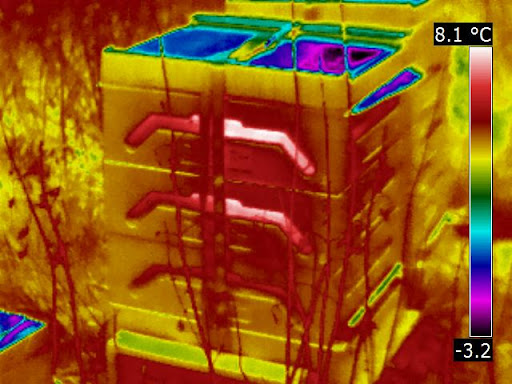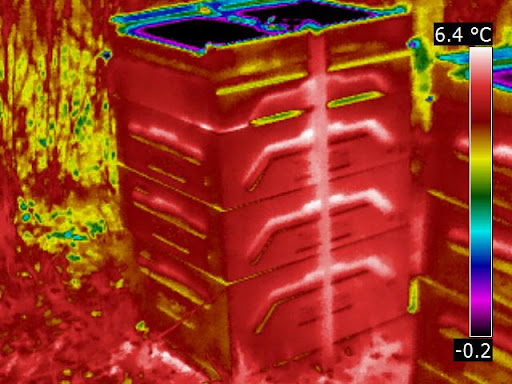Mike a
Drone Bee
- Joined
- Feb 13, 2010
- Messages
- 1,785
- Reaction score
- 3
- Location
- Hampshire
- Hive Type
- Langstroth
- Number of Hives
- Between 17-20
Fascinating! Thank you - looking forward to more.
But I don't know how much one can trust at its face value what one 'sees'.
With an air temperature of about +10, all the roof temperatures appear consistently MUCH lower, barely above freezing!
Is that perhaps a reflection of the sky rather than a real temperature?
Thermal imagining is an art and a science which I don't fully understand, but you are right. The temperatures you see on the scale do not reflect the true value of heat within or on the hive for various reasons. You are also spot on about the roof of the hive it is showing a reflection of the sky. If I had taken the picture from a different angle it would of shown the correct temperature which would of been slightly lower than the ground air temperatures. Most of my wooden hives have a layer of insulation built into the roof so if I see any hot spots I will be worried.
I would love to see what these heater nurse bees, covering queen cells, look like with your termal camera
I hope I will be able to take a few pictures next year as I want to look for some of the following:
Heater bees in action. What temperature are they generating.
Does the queen look any different, for instance does she produce the same amount of heat as other bees or does she rely on those around her to keep her warm.
Frames of eggs, brood and sealed brood. Are they all roughly the same temperatures or do they need to be kept warmer.
Newly emerging bees, do they heat themselves straight away.
Drones - do they contribute to the heat in a hive.
Plus many more...
Some of these may seem silly questions to some bee keepers reading this but I hope to find out for myself instead of just accepting what others have written in their books. My only concern is the quality of the pictures, our camera doesn't have a quick so called shutter speed and my bees aren't exactly calm on the frames so I suspect most of my pictures could well look burred.




